| Date | Text | |
|---|---|---|
30 Nov 1959

Dutch |
Dutch (astronomy and space ) Dutch mathematician Hans Freudenthal invents the artificial language Lincos, intended for communication with extraterrestrial intelligence. |
|
30 Nov 1959
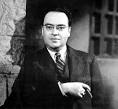
Juan Oro |
Juan Oro (biology) Juan Oro finds that concentrated solutions of ammonium cyanide in water can produce the nucleotide adenine. |
|
30 Nov 1959

Jerard Hurwitz |
Jerard Hurwitz (biology) Four independent researchers (Sam Weiss, Jerard Hurwitz, Audrey Stevens and J. Bonner) discover the bacterial RNA polymerase that regulates the polymerization of nucleotides under the control of DNA. |
|
30 Nov 1959
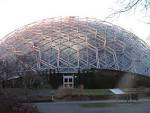
Climatron |
Climatron (biology) Climatron geodesic dome greenhouse opens at the Missouri Botanical Garden in St. Louis. |
|
30 Nov 1959
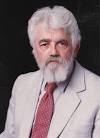
John McCarthy |
John McCarthy (computer science) John McCarthy of MIT publishes the Lisp programming language. |
|
30 Nov 1959

Harry Hammond Hess |
Harry Hammond Hess (earth sciences) Harry Hammond Hess proposes the concept of seafloor spreading. |
|
30 Nov 1959

Wacław Sierpiński |
Wacław Sierpiński (mathematics) Wacław Sierpiński proves the existence of Sierpinski numbers. |
|
30 Nov 1959

classification of finite simple groups |
classification of finite simple groups (mathematics) In the classification of finite simple groups, Michio Suzuki and Rimhak Ree introduce Suzuki–Ree groups; and John G. Thompson, Walter Feit and Marshall Hall prove that a group with a fixed-point-free automorphism of prime order is nilpotent, and that all finite simple CN groups of odd order are cyclic. |
|
30 Nov 1959

halogen lamp |
halogen lamp (technology) A tungsten halogen lamp bulb is patented by General Electric engineer Fredrick Moby. |
|
30 Nov 1959
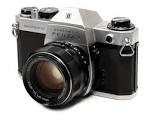
Pentax Spotmatic |
Pentax Spotmatic (technology) Prototype Pentax Spotmatic single-lens reflex camera, pioneering through-the-lens metering, is presented. |
|
23 Jan 1960

Ocean depth record |
Ocean depth record In 1960, a specially constructed bathyscaphe, the Trieste, descended 35,810 feet in the Pacific Ocean into Challenger Deep. This, the deepest point known to exist on earth, is in the Marianas Trench near the island of Guam. The Trieste cabin was a six-foot diameter steel capsule weighing 14 tons engineered by Swiss scientist Auguste Piccard to withstand the 16,000 lbs/sq.in. water pressure at that depth. Jacques Piccard (Auguste's son) and Navy Lieutenant Don Walsh made the five-hour descent, setting a deep-diving record. Through their window, they saw a foot-long fish, and thus answered the question of biologists who long wondered whether life could exist at such depths of the ocean. The record has stood unchallenged for 40 years since their historic dive. |
|
23 Jan 1960
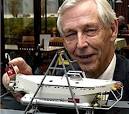
Jacques Piccard |
Jacques Piccard (exploration) Jacques Piccard and Don Walsh reach bottom in the Mariana Trench in United States Navy bathyscaphe Trieste at a depth of 10,916 m. |
|
23 Feb 1960

Black American patent |
Black American patent In 1960, black American inventor, F. M. Jones was issued a U.S. patent for a "Thermostat and Temperature Control System" (No. 2,926,005). |
|
05 Mar 1960
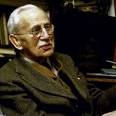
Alister Hardy |
Alister Hardy (biology) British marine biologist Sir Alister Hardy announces his aquatic ape hypothesis, theorising that swimming and diving for food exerted a strong evolutionary effect partly responsible for the divergence in the common descent of humans and other great apes. |
|
14 Mar 1960

Offshore sulphur mine |
Offshore sulphur mine In 1960, the first U.S. offshore sulphur mine began extracting sulphur. The Grand Isle offshore mine was built and operated by the Freeport Sulphur company, about 7 miles off the Louisiana coast in the Gulf of Mexico. A steel structure with drilling rigs stood in 50-ft of water to reach the deposit 2,000-ft below the ocean bed. The rig also carries generators and boilers to generate the superheated water injected into the bore in the Frasch extraction process to melt the sulphur and help drive the molten material to the surface. Humble Oil & Refining Co. discovered sulphur-bearing limestone while test drilling for oil in 1949, and within five years had eight more sulphur prospect holes. Freeport Sulphur Co. acquired the mineral rights on 19 Sep 1956. More than $22 million was spent on pre-production construction. |
|
14 Mar 1960
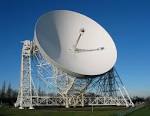
Jodrell Bank Observatory |
Jodrell Bank Observatory (astronomy and space ) Jodrell Bank Observatory in England makes radio contact with the U.S. Pioneer 5 probe over a distance of 407,000 miles (655,000 km). |
|
22 Mar 1960
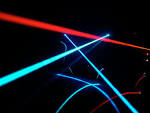
Laser |
Laser In 1960, the first laser was patented (U.S. No. 2,929,922) by Arthur Schawlow and Charles Hard Townes under the title “Masers and Maser Communications System.” What distinguished this invention as the first laser is that it was the first to operate in the visible light spectrum. The patent was assigned to the Bell Telephone Laboratories, where they had done the research. |
|
22 Mar 1960

Agnes Arber |
death Agnes Arber Died 22 Mar 1960 at age 81 (born 23 Feb 1879). British botanist (née Robertson) noted chiefly for her studies in comparative anatomy of plants, especially monocotyledons. Her interest in botany began in her schooldays in London. Her first book, Herbals: Their Origin and Evolution, published in 1912 and rewritten in 1938, became a standard textbook of the period. She was the first woman botanist to be made a fellow of the Royal Society, Britain's oldest and most important scientific society. Her later works were Water Plants: A Study of Aquatic Angiosperms (1920), Monocotyledons (1925), and The Gramineae: A Study of Cereal, Bamboo and Grass (1934). Arber also wrote, between 1902 and 1957, numerous articles on comparative anatomy. |
|
22 Mar 1960

Arthur Leonard Schawlow |
Arthur Leonard Schawlow (physics) Arthur Leonard Schawlow and Charles Hard Townes receive the first patent for a laser. |
|
01 Apr 1960

Frank Drake |
Frank Drake (astronomy and space ) July – Cornell University astronomer Frank Drake begins searching for signs of extraterrestrial intelligence with Project Ozma at the National Radio Astronomy Observatory at Green Bank, West Virginia. |
|
01 Apr 1960

weather satellite |
weather satellite (meteorology) The United States launches the first weather satellite, TIROS-1. |
|
13 Apr 1960
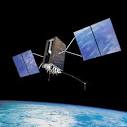
Navigational satellite |
Navigational satellite In 1960, the first U.S. navigational satellite, the Transit-1B was launched from cape Canaveral, Florida on a Thor-Ablestar rocket and the Ablestar carried out the first engine restart in space to refine the orbit.. The payload, weighing 265 pounds, included 2 ultrastable oscillators, 2 telemetry transmitters and receivers, batteries and solar cells. The Transit system was designed to meet Navy's need for accurately locating ballistic missile submarines and other ships. It achieved initial operational capability in 1964 and full capability in Oct 1968. Its navigational broadcasts were switched off deliberately on 31 Dec 1996. The Joint Chiefs of Staff had decided to rely on GPS alone for navigation and positioning, retired after more than 32 years of continuous, successful service to the U.S. Navy. |
|
13 Apr 1960

United States |
United States (astronomy and space ) The United States launches navigation satellite Transit I-b. |
|
15 Apr 1960

pacemaker |
pacemaker (medicine) William C. Chardack implants the first fixed-rate cardiac pacemaker with mercury battery, designed by Wilson Greatbatch. |
|
24 Apr 1960

Max von Laue |
death Max von Laue Max von Laue (born 1879), German physicist, winner of the 1914 Nobel Prize in Physics. |
|
30 Apr 1960
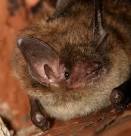
Little brown bat |
Little brown bat In 1960, the oldest U.S. bat was identified as 24 years old, having been banded on 22 Jun 1937 in Mashpee, Massachusetts. The female little brown bat (Myotis lucifugus), the most abundant bat in the U.S., was found in a cave on Mount Aeolis, Vermont. The little brown bat has a wing span of 222-269 mm with glossy fur on its back and paler underside colours ranging from pale tan to dark brown. The species is found throughout forested areas of North America and Alaska, in tree or cliff cavities, caves, mines and the attics. They feed on a wide variety of insects. On 25 Aug 1999, a newspaper reported a 33-yr-old wild bat in Europe. On 20 Jun 2005, a journal received an article identifying a 41-yr-old bat in Siberia. |
|
02 May 1960

coronary artery bypass surgery |
coronary artery bypass surgery (medicine) The first coronary artery bypass surgery is performed by a team led by Dr. Robert Goetz and thoracic surgeon Dr. Michael Rohman with the assistance of Drs. Jordan Haller and Ronald Dee at the Albert Einstein College of Medicine-Bronx Municipal Hospital Center in the United States using internal mammary artery as the donor vessel; the patient survives for 9 months. |
|
03 May 1960

Jaron Lanier |
birth Jaron Lanier Jaron Lanier, American computer scientist. |
|
08 May 1960

J. H. C. Whitehead |
death J. H. C. Whitehead J. H. C. Whitehead (born 1904), British mathematician. |
|
09 May 1960

Food and Drug Administration |
Food and Drug Administration (medicine) The U.S. Food and Drug Administration announces that it will approve birth control as an additional indication for Searle's Enovid, making it the world's first approved combined oral contraceptive pill. |
|
10 May 1960

USS Triton |
USS Triton (exploration) The nuclear submarine USS Triton, under the command of Captain Edward L. Beach, Jr., completes the first underwater circumnavigation of the Earth. |
|
15 May 1960

Sputnik program |
Sputnik program (astronomy and space ) Sputnik program: The Soviet Union launches Sputnik 4 into Earth orbit. |
|
16 May 1960
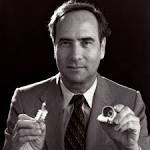
Theodore Maiman |
Theodore Maiman (physics) Theodore Maiman demonstrates the first working laser, a ruby laser, at Hughes Research Laboratories. |
|
22 May 1960

Valdivia earthquake |
Valdivia earthquake (earth sciences) Valdivia earthquake: Chile's subduction fault ruptures from Talcahuano to the Taitao Peninsula (with its epicenter near Lumaco), causing the most powerful earthquake on record (with a magnitude of 9.5) and a tsunami. |
|
03 Jun 1960

Freeman Dyson |
Freeman Dyson (astronomy and space ) British-born American theoretical physicist Freeman Dyson proposes the idea of Dyson spheres. |
|
06 Jun 1960

American Heart Association |
American Heart Association (medicine) The American Heart Association announces a strong statistical association between heavy cigarette smoking and coronary heart disease. |
|
17 Jun 1960
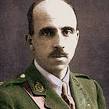
Harold Gillies |
death Harold Gillies Sir Harold Gillies (born 1882), New Zealand-born plastic surgeon. |
|
25 Jun 1960
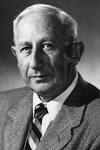
Walter Baade |
death Walter Baade Died 25 Jun 1960 at age 67 (born 24 Mar 1893). German-American astronomer who, with Fritz Zwicky, proposed that supernovae could produce cosmic rays and neutron stars (1934), and Baade made extensive studies of the Crab Nebula and its central star. During WW II blackouts of the Los Angeles area Baade used the 100-inch Hooker telescope to resolve stars in the central region of the Andromeda Galaxy for the first time. This led to his definition of two stellar populations, to the realization that there were two kinds of Cepheid variable stars, and from there to a doubling of the assumed scale of the universe. Baade and Rudolph Minkowski identified and took spectrograms of optical counterparts of many of the first-discovered radio sources, including Cygnus A and Cassiopeia A. |
|
01 Jul 1960

Robert Burns Woodward |
Robert Burns Woodward (biology) Robert Burns Woodward publishes a total synthesis of chlorophyll. |
|
14 Jul 1960
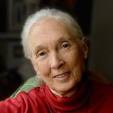
Jane Goodall |
Jane Goodall (biology) English primatologist Jane Goodall arrives at what will become Gombe Stream National Park in Tanganyika to begin her groundbreaking behavioral study of chimpanzees in the wild. |
|
29 Jul 1960
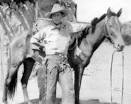
Clyde K.M. Kluckhohn |
death Clyde K.M. Kluckhohn Died 29 Jul 1960 at age 55 (born 11 Jan 1905). Clyde Ray Maben Kluckhohn was an American cultural anthropologist who a deep interest in culture and personality. He chose this profession based on his interest in psychology while at the same time expressing his interest in cultural diversity. He felt that diversities of authentic cultures must be represented in personality psychology. As a professor of anthropology at Harvard University, he contributed to anthropology in a number of ways: by his ethnographic studies of the Navajo; by his theories of culture, partial-value systems, and cultural patterns; by his intellectual leadership and stimulation of a large number of students; and by his representation of anthropology in government circles. |
|
01 Aug 1960
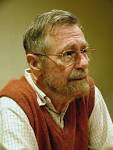
Edsger W. Dijkstra |
Edsger W. Dijkstra (computer science) Edsger W. Dijkstra and Jaap A. Zonneveld produce the first (X1) implementation of the ALGOL 60 programming language. |
|
10 Aug 1960

Space capsule recovery |
Space capsule recovery In 1960, an ejected space capsule from Discoverer 13 was recovered when it returned from orbit; it was the first human-made object recovered from space. |
|
10 Aug 1960

Oswald Veblen |
death Oswald Veblen Died 10 Aug 1960 at age 80 (born 24 Jun 1880). American mathematician who made important contributions in early topology, and in projective and differential geometry - work which found applications in atomic physics and the theory of relativity. In 1905, he proved the Jordan curve theorem, which states that every non-self-intersecting loop in the plane divides the plane into an "inside" and an "outside". Although it may seem obvious in its statement, it is a very difficult theorem to prove. During WW II, he was involved in overseeing the work that produced the pioneering ENIAC electronic digital computer. His name is commemorated by the American Mathematical Society's Oswald Veblen Prize. Awarded every five years, it is the most prestigious award in recognition of outstanding research in geometry. |
|
12 Aug 1960
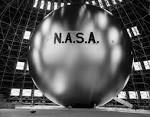
Project Echo |
Project Echo (astronomy and space ) First experimental Project Echo passive communications satellite goes into orbit. |
|
15 Aug 1960

First UK motorway services with restaurant opened |
First UK motorway services with restaurant opened In 1960, the first British motorway services with restaurant opened at Newport Pagnell on the M1 motorway. It was operated by Motorway Services Ltd, a joint venture by Forte and Blue Star. The latter provided the fuel sales. Fortes Grill & Griddle Restaurant spanned the road. It served food with waitress service. The service area was originally intended by the government to be developed for cars only, with another at Watford Gap for lorries only, but opened for all vehicles. The Watford Gap services, although opened earlier (2 Nov 1959, on the same day as the M1 motorway), was unfinished (food sold from temporary sheds) and was not of the conventional design. |
|
15 Aug 1960
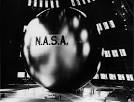
Echo 1 satellite phone link test |
Echo 1 satellite phone link test In 1960, a phone link was tested via the newly launched Echo 1 ballooon satellite on its 31st circuit of the earth. The experiment was conducted by Bell Telephone Laboratories. A call originating via a normal telephone land line to the Jet Propulsion Laboratory at Goldstone, California, was patched into a radio beam bounced off the ten-story satellite balloon in orbit 1,000 miles above the earth. The radio signal was picked up on the other coast at the Bell Laboratory at Holmdel, New Jersey, where it was connected through a conventional telephone exchange to be connected to a receiving telephone. Reception of both a two-way voice conversation and music was satisfactory, and without distortion. The satellite was passive, just a reflector of the radio signal. The New York Times reported the test. |
|
14 Sep 1960

Sir Arthur Percy Morris Fleming |
death Sir Arthur Percy Morris Fleming Died 14 Sep 1960 at age 79 (born 16 Jan 1881). English engineer who was a major figure in developing techniques for manufacturing radar components. During WW I, Fleming made important advances in submarine-detection gear. In 1920, as a pioneer in the development of radio, he established in Manchester the second British transmitting station to broadcast programs on a daily basis. His work on demountable, high-power thermionic tubes made it possible to establish radar stations in Great Britain by the time WW II began in 1939. |
|
20 Sep 1960

Ernest Goodpasture |
death Ernest Goodpasture Died 20 Sep 1960 at age 73 (born 17 Oct 1886). Ernest (William) Goodpasture was an American research scientist, the founder of mumps vaccine, Professor of Pathology, Vanderbilt University School of Medicine. Noted for research in virology, particularly the isolation and identification of viruses, the pathogenesis and pathology of viral diseases. He discovered the first practical method for developing uncontaminated viruses in chick embryos, which made possible the mass-production of vaccines for such diseases as smallpox, influenza, yellow fever, typhus, Rocky Mountain spotted fever, and other illnesses caused by agents that can be propagated only in living tissue. Also known for describing Goodpasture's disease (1919), an uncommon condition which typically causes rapid destruction of the kidneys. |
|
01 Oct 1960
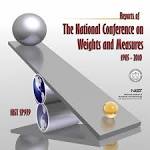
General Conference on Weights and Measures |
General Conference on Weights and Measures (metrology) 11th General Conference on Weights and Measures establishes International System of Units, abbreviated SI from the French name, Le Système international d'unités. |
|
14 Oct 1960

Metric System |
Metric System In 1960, the fourth legal definition of the metre was made to be 1,650,763.73 wavelengths in vacuum of the orange-red light radiation of the krypton-86 atom (transition between levels 2p10 and 5d5). It was adopted at the 11th meeting of the Conférence Générale des Poids et Mesures (CGPM), which also specified the seven basic units of the SI system. It was superceded by a fifth definition of the metre on 20 Oct 1983, based on the speed of light. The definition in terms of wavelengths of the kryton spectral line wasthen 100 times more accurate than the previous third legal definition adopted in 1889. (The third legal definition on 28 Sep 1889, was based on the distance between two reference markson the International prototype metre bar, made of platinum-iridium, (90% Pt, 10% Ir), cross section X, at a 0 °C temperature.) |
|
18 Oct 1960

Craig Mello |
birth Craig Mello Craig Mello, American biologist. |
|
29 Oct 1960

Johan Gunnar Andersson |
death Johan Gunnar Andersson Died 29 Oct 1960 at age 86 (born 3 Jul 1874). Swedish geologist and archaeologist whose work laid the foundation for the study of prehistoric China. In 1914, he accepted the offer to become adviser to the Geological survey of China, where he stayed until 1924 and became deeply involved in the excavations at Chou-k'ou-tien outside Peking. In 1921, at a cave near there, on the basis of bits of quartz that he found in a limestone region, he predicted that a fossil man would be discovered. Six years later, the first evidence of the fossil hominid Sinanthropu (Peking man) was found there. In 1923-24, he organized an expedition to Gansu province in Western china where he localised and examined some 50 sites of prehistoric China. |
|
30 Oct 1960

kidney transplantation |
kidney transplantation (medicine) The first kidney transplantation in the United Kingdom is performed by a team led by English surgeon Michael Woodruff at the Royal Infirmary of Edinburgh between identical twins. |
|
04 Nov 1960

Kasakela Chimpanzee Community |
Kasakela Chimpanzee Community (biology) At the Kasakela Chimpanzee Community, Jane Goodall observes a chimpanzee using a grass stalk to extract termites from a termite hill, the first recorded case of tool use by animals. |
|
04 Nov 1960

OH 7 |
OH 7 (paleontology) OH 7, first fragments of Homo habilis, discovered by Jonathan Leakey at Olduvai Gorge, Tanzania. |
|
05 Dec 1960

Walter Dorwin Teague |
death Walter Dorwin Teague Died 5 Dec 1960 at age 76 (born 18 Dec 1883). American industrial designer who pioneered in the establishment of industrial design as a profession in the United States. Teague designed cameras for Eastman Kodak and Polaroid, glassware for Steuben, interior designs, and many other items such as flat irons and radios. He designed the old-style Texaco gas stations, the ones that were painted white with forest-green streamline stripes and a free-standing post bearing the red Texaco star logo on a white disk, which were built alike over America. |
|
24 Dec 1960

Carol Vorderman |
birth Carol Vorderman Carol Vorderman, British mathematician. |
|
25 Dec 1960

Cryosurgery |
Cryosurgery In 1960, Dr Irving Cooper received a Christmas gift that inspired his invention of the first cryosurgery device (to freeze tissue). The gift was a wine-bottle opener which lifted the cork by injecting carbon dioxide gas into the bottle. He observed the gas was very cold when released and he could direct small squirts from it to freeze tiny areas on the palm of his hand and watch them thaw. He also observed the freezing effect was very localized and isolated from the surrounding tissue. From this inspiration, he developed a technique of brain surgery in which he used liquid nitrogen flowing in a thin tube first to deaden, and then freeze, tremor-causing brain cells or tumours. The invention created a new field of surgery with applications for other areas of the body as well. |
|
29 Dec 1960

Frederick Fuller Russell |
death Frederick Fuller Russell Died 29 Dec 1960 at age 90 (born 17 Aug 1870). American scientist who developed the first successful U.S. typhoid fever vaccine. Russell earned his medical degree in 1893 and was commissed in 1898 as first lieutenant and assistant surgeon in the U.S. Army. In summer 1908, the U.S. Army Surgeon General sent him to Europe to study the experience of the British and German armies in anti-typhoid vaccination. In 1909, Major Russell prepared a laboratory the Army Medical Museum for manufacturing vaccine, and vaccinated volunteers, the first of whom came from the museum and the medical school. By the end of 1910, 10,841 volunteers had been vaccinated. This was made compulsory for military personnel the next year. The reduction in the incidence of the disease was dramatic. |